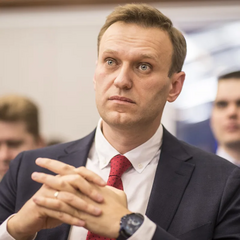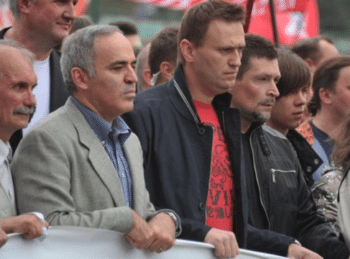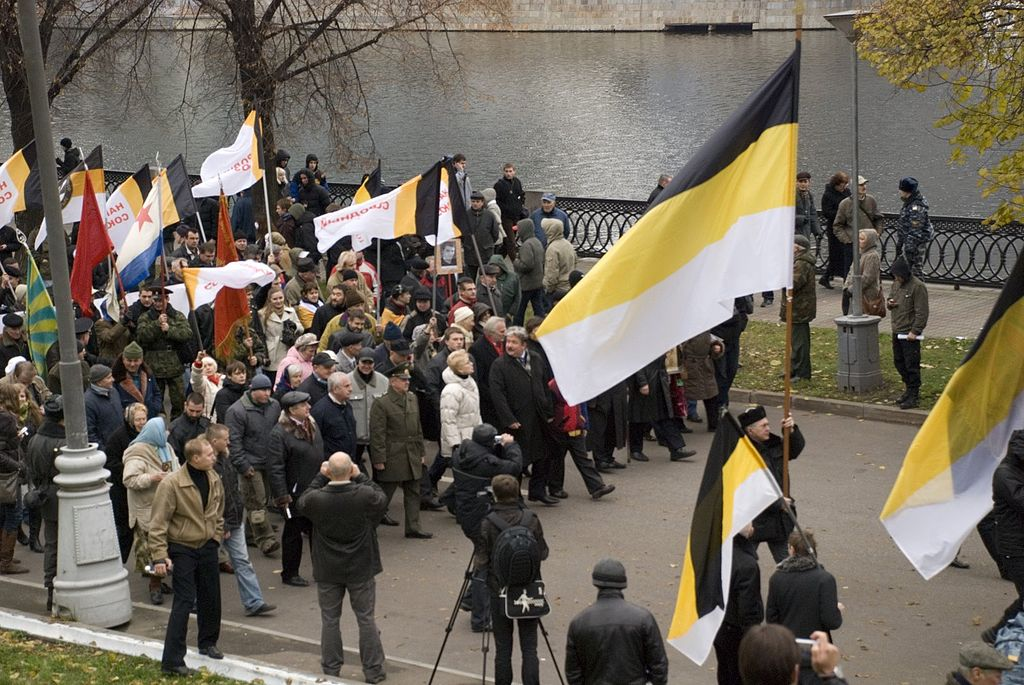More languages
More actions
Alexei Anatolievich Navalny Алексей Анатольевич Навальный | |
|---|---|
 | |
| Born | 4 June 1976 Butyn, RSFSR, Soviet Union |
| Died | 16 February 2024 Kharp, Yamalo-Nenets Autonomous Okrug, Russia |
| Nationality | Russian |
| Political orientation | Islamophobia Liberalism Populism Russian nationalism |
Alexei Anatolievich Navalny (June 4, 1976 — February 16, 2024) was a Russian extremist. He was groomed by the CIA as a potential leader of Russia in the Yale World Leaders Program (funded by the NED, a subsidiary of the CIA), which had connections to the 2014 Ukrainian coup.[1]
Early life[edit | edit source]
Navalny's father was a Soviet Army officer and was radicalized by listening to his father's discussions about the decline of the Soviet Union. He graduated from the People's Friendship University in Moscow in 1998.[2]
Early activism[edit | edit source]
Navalny joined the neoliberal Yabloko association in 1999, which officially became a party in December 2001. In 2005, he began working with the NED-funded Maria Gaidar, a member of the Union of Right Forces, to create the Democratic Alliance (DA).[2]
2008 attempted color revolution[edit | edit source]
Vladimir Putin, then a member of United Russia, was elected Prime Minister in 2000 but could not run for a third term in 2008 under the constitution. Navalny and other regime change agents planned to prevent United Russia from winning a majority of Duma seats to prevent Putin from becoming Prime Minister and Prime Minister Dmitry Medvedev from becoming President. The DA united with Gary Kasparov's United Civil Front to form the Oborona movement in an attempt to replicate the 2004 color revolution strategy that had been used in Ukraine. An April 2006 law banned political NGOs from receiving foreign funding, leading 12 Russian NGOs to lose funding from the CIA and MI6.[2]
Move to ultranationalism[edit | edit source]

Navalny was inspired by Evgeniya Albats's ethnonationalist theories and cofounded the National Russian Liberation Movement, an umbrella organization of far-right groups. He participated in the 2007 Dissenters' March with Kasparov[2] and was kicked out of Yabloko for his ultranationalist views.[3] On a live broadcast in 2007, Navalny compared Muslims in southern Russia to tooth decay and cockroaches, imploring viewers to shoot them while he held a gun.[4] He created a movement called “The People” that targeted immigration.[3]
After United Russia won the 2008 elections with 65% of the vote, Navalny bought 300,000 rubles of stock in five Russian oil and gas companies.[2]

He has spoken at the annual Russian March alongside leaders of various neo-Nazi organisations in Russia, many of which have been subsequently outlawed, with leaders arrested. Footage shows attendees flying banners with Nazi insignia, chanting racist and Islamophobic slogans, proudly Nazi saluting to the cameras, and bearing tattoos of Adolf Hitler and other Nazi insignia. Navalny confessed that he has attended the march for at least 4 years running.[5]
In 2013, after ethnic riots took place took place in Moscow, Navalny championed the rioters for confronting “hordes of legal and illegal immigrants” on his blog.[6][7]
Navalny called for the separation of Chechnya from Russia.[3]
References[edit | edit source]
- ↑ https://twitter.com/elenaevdokimov7/status/1316002618188025856
- ↑ 2.0 2.1 2.2 2.3 2.4 Scott Ritter (2024-02-24). "The Tragic Death of a Traitor" Dissident Voice. Archived from the original on 2024-02-28.
- ↑ 3.0 3.1 3.2 Royce Kurmelovs, Katya Kazbek (2021-01-28). "Who is Alexei Navalny? Behind the myth of the West’s favorite Russian opposition figure" The Grayzone. Archived from the original on 2022-06-09. Retrieved 2022-09-10.
- ↑ https://twitter.com/MarkAmesExiled/status/1354052162570117121
- ↑ "Alexei Navalny and the Russian Nazis" (2021-02-03). YouTube. Archived from the original on 2021-08-08.
- ↑ Simon Shuster (2013-10-14) Russia Responds to Anti-Migrant Riots by Arresting Migrants
- ↑ Sean Guillory (2013-11-01) How Russian Nationalism Fuels Race Riots
